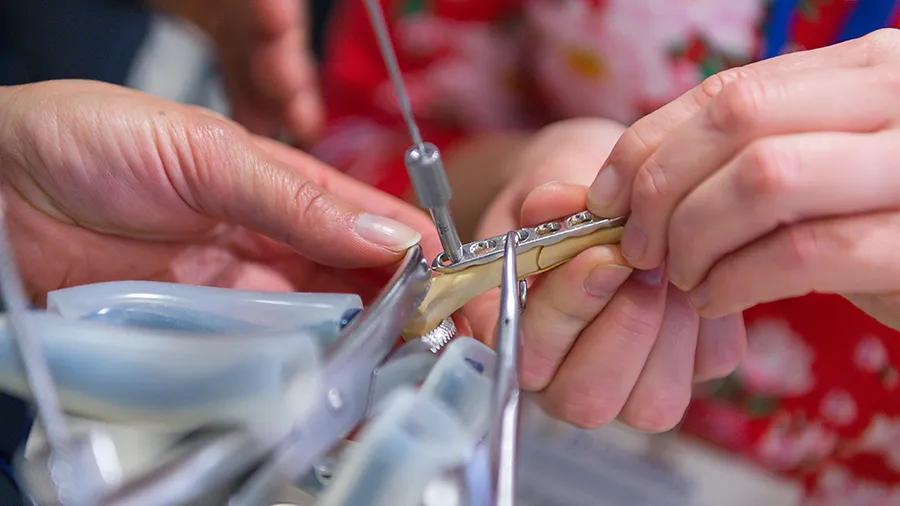Lateral parapatellar approach to the dog distal femur
1. Indications
The lateral parapatellar approach is most commonly used to approach fractures of the distal femur. This approach provides adequate visualization of the articular surface of the femoral condyles and allows access for implant placement in the distal femoral metaphysis and epiphysis.
If longer bone plates are required for fracture fixation, this approach can be combined with the open lateral approach to the femur.
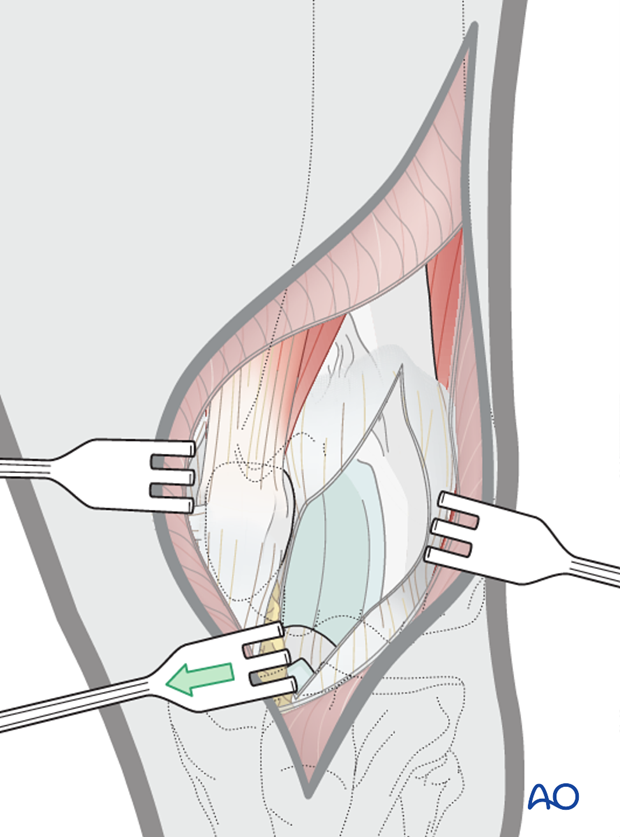
2. Anatomy
Key anatomic landmarks to be identified prior to the surgical approach include:
- Patellar tendon
- Long digital extensor tendon
- Lateral collateral ligament
- Articular surface
Depending on the fracture type, these landmarks may be displaced. Care should be taken to identify and avoid damage to them during the approach.
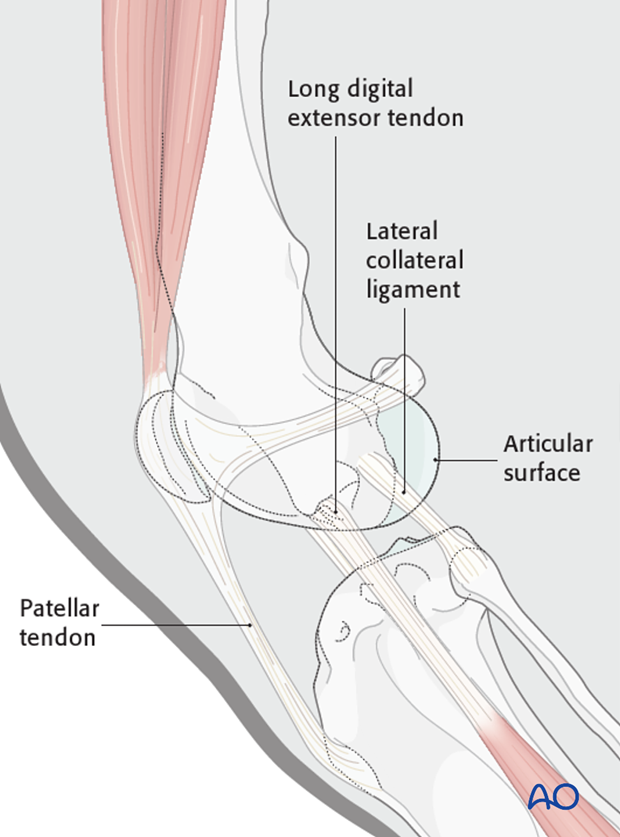
3. Skin incision
A parapatellar skin incision is made from the distal third of the femur to the proximal tibia.
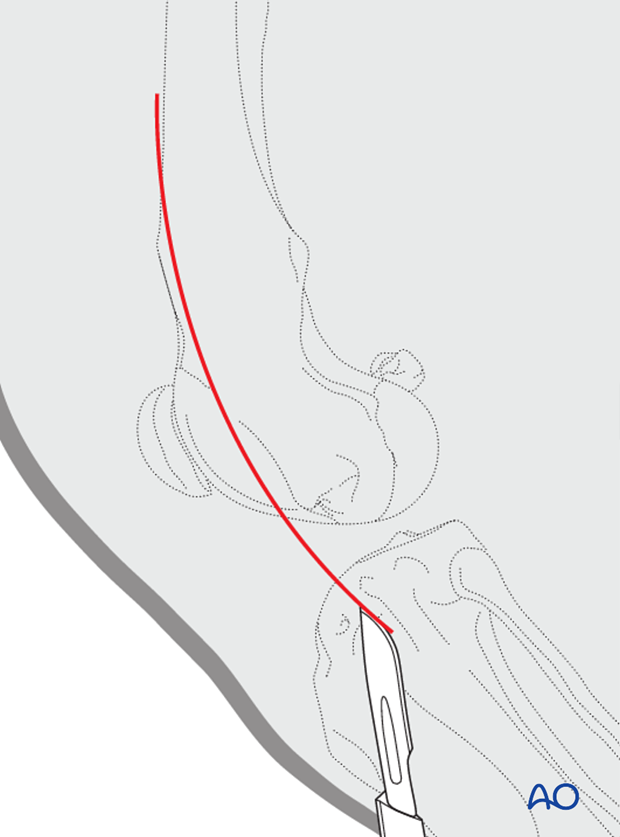
4. Exposure
The subcutaneous tissues are incised along the same line and retracted.
The lateral fascia is incised cranial to the biceps muscle. The incision is extended distally across the stifle joint 2-3 mm lateral to the patellar tendon.
The biceps fascia is retracted caudally.
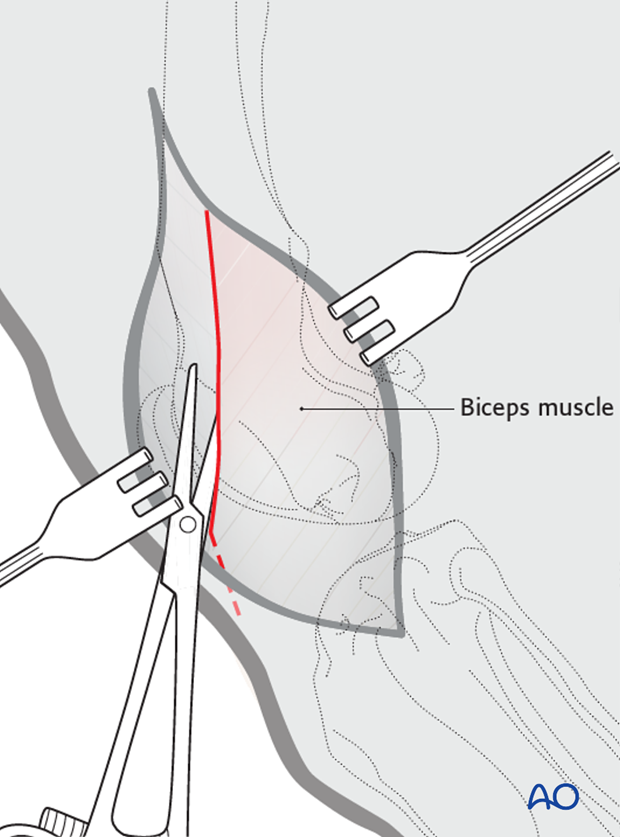
Separation between the biceps fascia and the vastus lateralis muscle is necessary proximally. A branch of the caudal femoral artery lies in this region; it may need to be cauterized or ligated.
A stab incision is made into the joint capsule adjacent the patella. The incision is extended proximally and distally using scissors.
Note: Grasp and tent the joint capsule with forceps prior to the stab incision to allow more room between the scalpel blade and articular cartilage. Care must be taken to protect the tendon of the long digital extensor while making the incision.
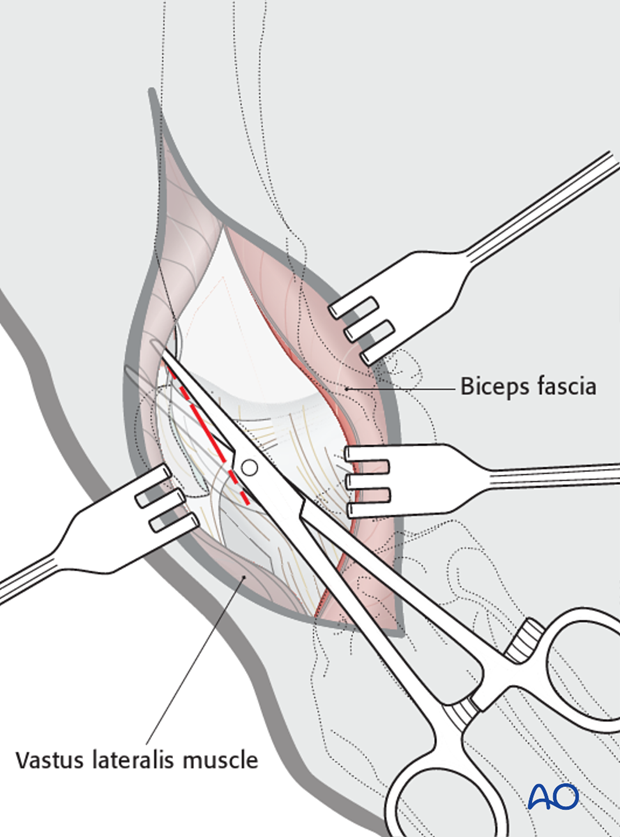
With the stifle in extension the patella is luxated medially for exposure of the articular surfaces of the distal femur.
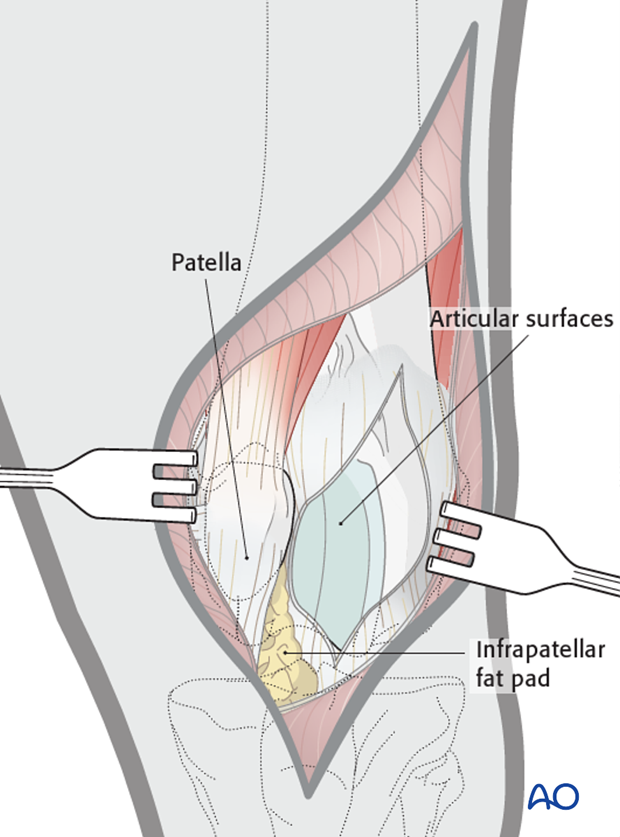
Retraction of the infrapatellar fat pad may be helpful to inspect the joint thoroughly.

The lateral parapatellar approach provides adequate visualization of both femoral condyles and fracture lines, as shown in the picture.
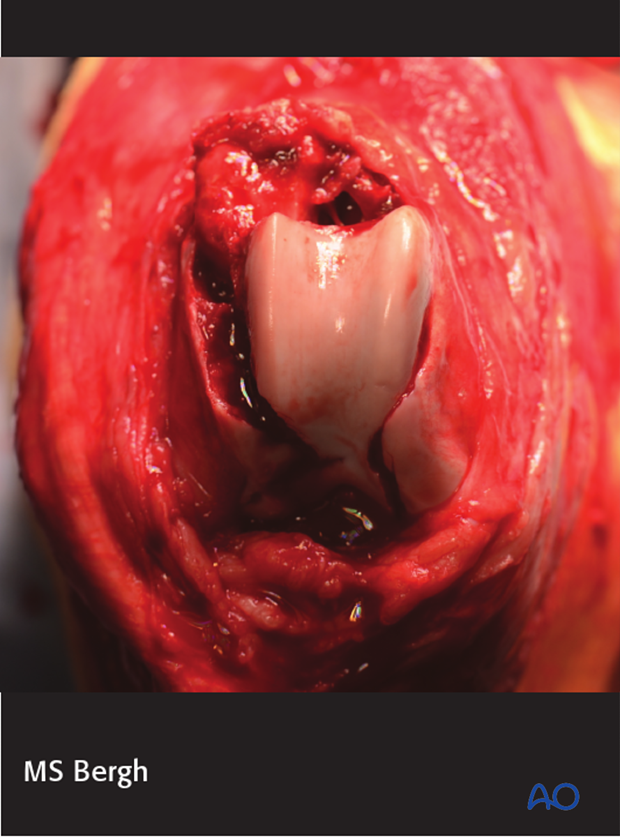
5. Closure
The joint capsule, and the biceps fascia is closed in an appositional pattern. Subcutis and skin are routinely closed.
